A number of 2021 free agents, including John Collins, Jarrett Allen, and Chris Paul, did extremely well for themselves on the open market this fall. However the most lucrative contracts signed since the new league year began weren’t free agent deals at all — they were contract extensions.
Extensions, of course, don’t involve adding a new player to the roster. By extending a contract, a team ensures that a current player will remain locked up for multiple years to come. Although a contract extension may not change the club’s outlook on the court, it can have a major impact on that team’s salary cap situation for the next several seasons.
Rookie scale extensions have typically been the most common form of contract extension. Former first-round picks who are entering the fourth and final year of their rookie deals are eligible to sign those up until October 18. It’s common for at least four or five players eligible for rookie scale extensions to sign them, and that number could be much higher — in 2020, there were 10 rookie scale extensions.
[RELATED: Players Eligible For Rookie Scale Extensions In 2021 Offseason]
While they used to be less common than rookie scale extensions, veteran extensions are happening more frequently these days, with the league’s current Collective Bargaining Agreement expanding the rules for eligibility and creating some additional incentives for star players to sign new deals before they reach free agency. In the past two league years, a total of 19 veteran extensions were signed, matching the 19 rookie scale extensions completed during that same window.
The deadline for a veteran extension for a player who isn’t in the final year of his current contract is October 18. However, a player eligible for a veteran extension who is on an expiring deal can sign a new contract throughout the season.
Listed below are the players who have finalized contract extensions so far in the 2021/22 league year. This list, which can be found on the right-hand sidebar under “Hoops Rumors Features” on our desktop site (or on the “Features” page in our mobile menu) will be kept up to date throughout the offseason — and throughout the ’21/22 regular season if any veteran players ink an extension at that point.
Rookie scale contract extensions:
- Luka Doncic (Mavericks): Five years, maximum salary (story). Projected value of $207,060,000. Includes fifth-year player option and 15% trade kicker. Starts in 2022/23.
- Trae Young (Hawks): Five years, maximum salary (story). Projected value of $172,500,000. Projected value can increase to $207,060,000 if Young earns All-NBA honors in 2022. Includes fifth-year player option and 15% trade kicker. Starts in 2022/23.
- Shai Gilgeous-Alexander (Thunder): Five years, maximum salary (story). Projected value of $172,500,000. Projected value can increase to $207,060,000 if Gilgeous-Alexander earns All-NBA honors in 2022. Includes 15% trade kicker. Starts in 2022/23.
- Michael Porter Jr. (Nuggets): Five years, maximum salary (story). Projected value of $172,500,000. Projected value can increase to $193,256,000 or $207,060,000 if Porter earns All-NBA honors in 2022. Includes partial guarantee ($12MM) in fifth year. Starts in 2022/23.
- Jaren Jackson Jr. (Grizzlies): Four years, $104,720,000 (story). Includes Exhibit 3 injury protection related to Jackson’s left knee. Starts in 2022/23.
- Mikal Bridges (Suns): Four years, $90,000,000 (story). Starts in 2022/23.
- Kevin Huerter (Hawks): Four years, $65,000,000 (story). Starts in 2022/23.
- Wendell Carter Jr. (Magic): Four years, $50,000,000 (story). Starts in 2022/23.
- Robert Williams (Celtics): Four years, $48,000,000 (base value) (story). Includes $6MM in total incentives. Starts in 2022/23.
- Landry Shamet (Suns): Four years, $42,500,000 (story). Includes non-guaranteed third year and fourth-year team option. Starts in 2022/23.
- Grayson Allen (Bucks): Two years, $17,000,000 (base value) (story). Includes $2.55MM in total incentives. Starts in 2022/23.
Veteran contract extensions:
- Stephen Curry (Warriors): Four years, $215,353,662 (story). Starts in 2022/23.
- Kevin Durant (Nets): Four years, $192,504,908 (base value) (story). Includes $5,152,000 in total incentives. Starts in 2022/23.
- Joel Embiid (Sixers): Four years, maximum salary (story). Includes fourth-year player option. Starts in 2023/24.
- Note: Embiid’s starting salary in 2023/24 will be 35% of the ’23/24 salary cap.
- Jimmy Butler (Heat): Three years, maximum salary (story). Includes third-year player option. Starts in 2023/24.
- Note: Butler’s starting salary in 2023/24 will be the lesser amount of $45,183,960 or 35% of the ’23/24 salary cap.
- Julius Randle (Knicks): Four years, $106,444,800 (base value) (story). Includes $15,966,720 in total incentives, a fourth-year player option, and a 15% trade kicker. Starts in 2022/23.
- Terry Rozier (Hornets): Four years, $96,258,694 (story). Includes partial guarantee ($24,924,126) in fourth year. Starts in 2022/23.
- Aaron Gordon (Nuggets): Four years, $86,640,001 (base value) (story). Includes $4.8MM in total incentives and a fourth-year player option. Starts in 2022/23.
- Marcus Smart (Celtics): Four years, $77,087,995 (story). Includes trade kicker ($1MM or 15%; whichever is lesser). Starts in 2022/23.
- Dorian Finney-Smith (Mavericks): Four years, $55,560,960 (story). Includes fourth-year player option and 5% trade kicker. Starts in 2022/23.
- Malcolm Brogdon (Pacers): Two years, $45,000,000 (story). Starts in 2023/24.
- Clint Capela (Hawks): Two years, $42,881,280 (base value) (story). Includes $4MM in incentives. Starts in 2023/24.
- Daniel Gafford (Wizards): Three years, $40,182,480 (story). Starts in 2023/24.
- Ivica Zubac (Clippers): Three years, $32,800,000 (story). Starts in 2022/23.
- Jonas Valanciunas (Pelicans): Two years, $30,135,000 (story). Includes trade kicker ($1MM or 15%; whichever is lesser). Starts in 2022/23.
- Gary Harris (Magic): Two years, $26,000,000 (story). Second year non-guaranteed. Starts in 2022/23.
- Robert Covington (Clippers): Two years, $24,000,000 (story). Starts in 2022/23.
- Terance Mann (Clippers): Two years, $22,000,000 (story). Starts in 2023/24.
- Taurean Prince (Timberwolves): Two years, $14,555,000 (story). Second year non-guaranteed. Includes $2.13MM in total incentives. Starts in 2022/23.
- Thaddeus Young (Raptors): Two years, $16,000,000 (base value) (story). Second year partially guaranteed. Includes $1MM in total incentives. Starts in 2022/23.
- Patrick Beverley (Timberwolves): One year, $13,000,000 (story). Starts in 2022/23.
- Josh Richardson (Celtics): One year, $12,196,084 (story). Starts in 2022/23.
- Note: Richardson has been traded to the Spurs since signing his extension.
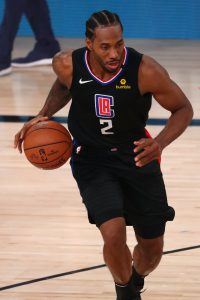
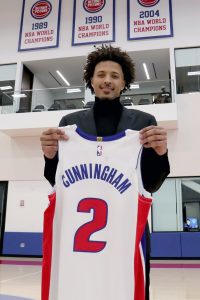 Detroit Pistons:
Detroit Pistons: 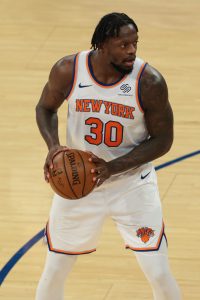
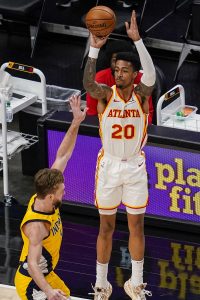
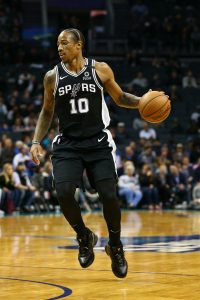 Note: Some of these salary figures may includes options, incentives, or non-guaranteed money.
Note: Some of these salary figures may includes options, incentives, or non-guaranteed money.